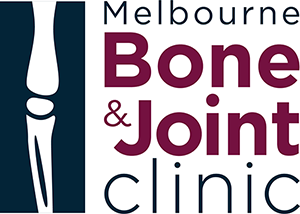Revision Total Hip Replacement
This document will give you information about a revision total hip replacement. If you have any questions, you should ask your GP or other relevant health professional.
What is a revision total hip replacement?
A revision total hip replacement is an operation to take out your old hip replacement and put in a new one.
A hip replacement can fail for the following reasons.
- Wearing out of the artificial ball-and-socket joint.
- Infection in your hip replacement.
- Dislocation.
- Fracture of the femur.
What are the benefits of surgery?
You should be able to walk better and do more of your normal activities.
Are there any alternatives to surgery?
If your symptoms are mild, you may decide to watch and wait for a while.
If you have an infection, antibiotics can sometimes prevent your hip replacement failing.
If your hip replacement keeps coming out of joint, you can wear a brace.
If you have a fracture, you can sometimes be treated with traction.
What does the operation involve?
Various anaesthetic techniques are possible.
Your surgeon will make a cut on the side of your hip. They will remove your hip replacement and any cement.
Your surgeon will put in a new hip replacement. Your hip replacement is fixed into the bone using acrylic cement or special coatings on your hip replacement that bond directly to the bone.
The type of surgery you need can be more complicated if the bone is thin or broken, or if you have an infection (see figure 1).
What complications can happen?
1 General complications
- Pain
- Bleeding
- Infection of the surgical site (wound)
- Unsightly scarring
- Blood clots
- Difficulty passing urine
- Chest infection
- Heart attack
- Stroke
2 Specific complications
- Split in the femur
- Damage to nerves
- Damage to blood vessels
- Infection in your hip
- Loosening
- Bone forming in muscles around your hip replacement
- Dislocation
- Leg length difference
- Death
How soon will I recover?
You should be able to go home after 5 to 10 days.
You will need to use crutches or walking sticks for a few weeks.
Regular exercise should help you to return to normal activities as soon as possible. Before you start exercising, ask the healthcare team or your GP for advice.
Most people make a good recovery and most revision total hip replacements work well. It is important to follow the advice the physiotherapist gives you about exercises to strengthen your hip muscles.
A revision total hip replacement can fail with time.
Summary
If your original hip replacement fails, you can usually have another operation to do your hip replacement again. If this revision operation is successful, you should be able to continue many of your normal activities.
Acknowledgements
Author: Mr Stephen Milner DM FRCS (Tr. & Orth.)
Illustrations: Medical Illustration Copyright © Medical-Artist.com
This document is intended for information purposes only and should not replace advice that your relevant health professional would give you.
The operation and treatment information on this page is published under license by Arvind Jain from EIDO Healthcare Australia and is protected by copyright laws.
